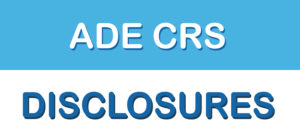Financial Planning Month
Plan the Journey to Your Financial Future.
Whatever your destination, it helps to have a map—and that’s especially true when you’re preparing financially for the journey we call life. Whether your financial goals include paying off debts, buying a house, helping your kids through college, or being financially secure through your golden years—it’s best to start planning now.
As Financial Planning Month, October provides the nudge you may need to assess your current financial situation, plan for the future, and make any changes necessary to reach your goals—or at least get closer to them.
The origins of Financial Planning Month aren’t clear—but the intent is
The history of Financial Planning Month isn’t easy to track down, but it has been recognized for years by financial institutions, advisors, journalists, and others as a great opportunity to raise awareness about the importance of taking steps now to financially prepare for the future. Financial planning is important year-round, but getting reminded of it every October is especially helpful when preparing for upcoming holidays and the related higher-than usual expenditures tied to travel, gift-giving, entertaining, and more. It may also inspire you to add some New Year’s resolutions to your list! (More on that later.)
How to recognize Financial Planning Month—and start creating your financial plan
Creating a road map of financial goals should include short-term, intermediate, and long-term goals. While a lot of people think about what they’d like to have at different stages of life, not many of them have an actual plan to reach those goals. Schwab’s 2021 Modern Wealth Survey found that only 33% of Americans have taken the time to create a written financial plan. The other 67% said they didn’t have time to develop a plan—or they didn’t have enough money to bother making a plan.
Getting started on a financial plan doesn’t necessarily take a lot of time or money, though. You can start with small steps, which add up and can get you closer to your goals. Recommendations include:
Review your spending and create a budget. By looking more closely at your credit card and bank statements, you may discover that you’re overspending in some categories that don’t matter as much to you as they once did. Increasing your awareness of where your money is going may inspire you to eliminate or spend less on products or services that aren’t essential or fully utilized.
Reduce expenses where possible. Be mindful of your spending habits to see where you can cut back. Even small changes add up. Maybe you can shave off some expenses by packing your own lunch instead of ordering takeout, for example, or by taking steps to reduce or eliminate overdraft fees or other banking expenses.
Make reducing debt a priority. Interest charges can add up quickly, so do what you can to decrease what you owe.
Donate or sell what you’re not using anymore. If you have antiques in your attic, an older computer you’re not using, books you’ll never read again—or something else—consider selling or donating them. Selling brings in extra cash, and qualified donations to charities are tax deductible.
Create an emergency fund. If you don’t already have funds set aside for emergencies, try to contribute a set amount every week to a savings account so you can be better prepared. A $20-per-week contribution will add up to $1,040 per year (not including interest).
Work with a financial professional. Saving money and cutting back expenses is a great start, but a qualified financial advisor can help you determine if you’re saving enough— and what investments might be suitable to help you pursue your financial goals.
If the actions you take during Financial Planning Month inspire you to add some New Year’s resolutions to your list, you’re in luck! LPL Financial has created a downloadable e-book, “Financial Wellness Starts Now,” to help you out.
Thanks for checking out the blog.
Gregory Armstrong , CFP®
This material is for general information only and is not intended to provide specific advice or recommendations for any
individual. There is no assurance that the views or strategies discussed are suitable for all investors or will yield positive
outcomes. Investing involves risks including possible loss of principal.
This material was prepared by LPL Financial. Securities and advisory services offered through LPL Financial (LPL), a registered investment advisor and
broker-dealer (member FINRA/SIPC).
Insurance products are offered through LPL or its licensed affiliates. To the extent you are receiving investment advice from a separately registered independent investment advisor that is not an LPL Financial affiliate, please note LPL Financial makes no representation with respect to such entity.
Securities and insurance offered through LPL or its affiliates are: 









